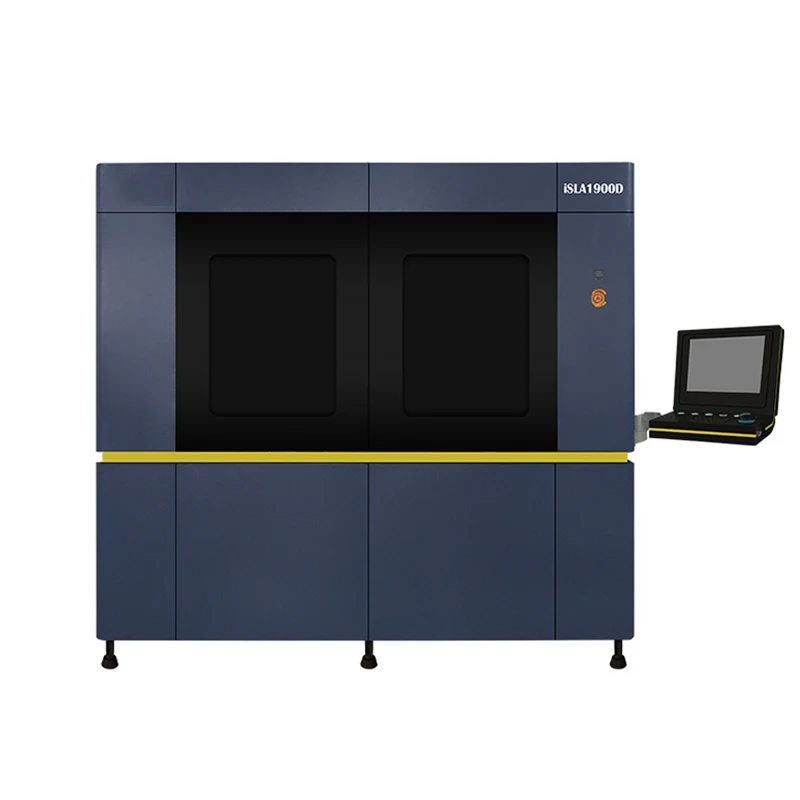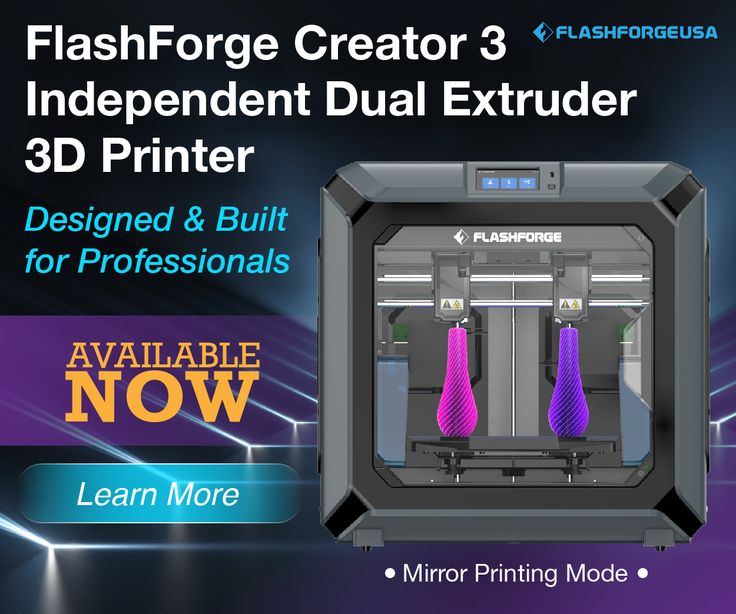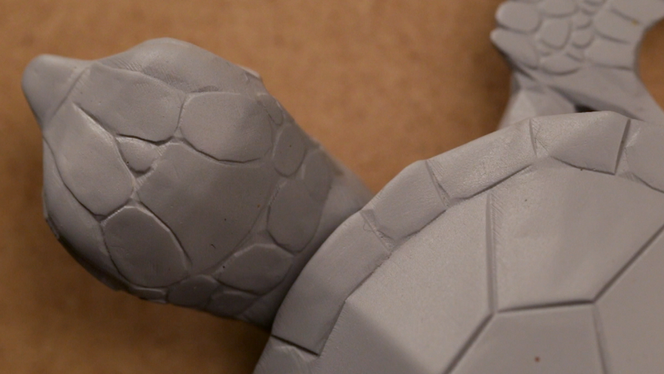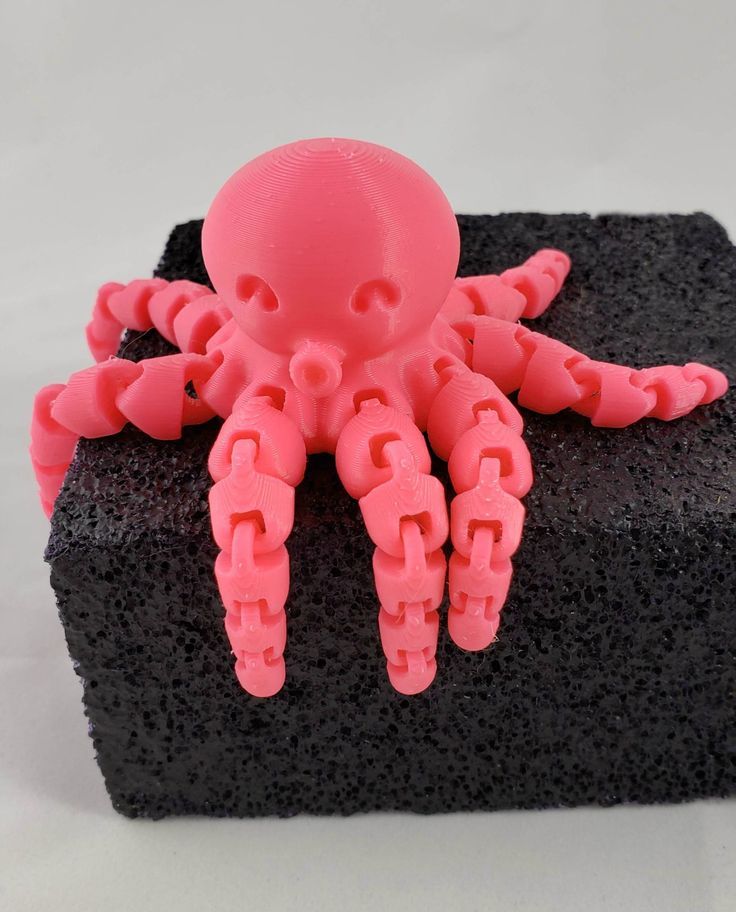Slm 3d printer price
SLM Solutions SLM 280 HL 3D Printer
| Brand | SLM Solutions |
| Machine type | 3D Printer |
| Technology | SLS (Selective Laser Sintering) |
| Materials | Cobalt-Chrome (CoCr), Stainless Steel 17-4 PH, Aluminium Alloy AlSi12, Stainless Steel 316L, Aluminium AlSi10Mg |
| Website | https://slm-solutions.com/products/machines/selective-laser-melting-machine-slm-280-20 |
| Average Price | Contact manufacturer |
The optimal approach for reliable metal part production and prototypes. Flexible, safe and efficient. Up to 80% higher build-up rate.
The Selective Laser Melting Machine SLM 280 2.0 provides a 280 x 280 x 365 mm³ build envelope and a patented multi-beam technology. During the build process up to two fiber lasers expose the build field via a 3D scan optic. The SLM 280 2.0 is available in several configurations, providing single optics (1x 400W or 1x 700W), dual optics (1x 700W and 1x 1000W) and twin optics (2x 400W or 2x 700W). Depending on how the components are arranged, a 80% higher build rate can be achieved. In addition, the patented bidirectional powder coating helps to reduce the manufacturing time of individually manufactured metal build parts. Thus, the Selective Laser Melting Machine SLM 280 2.0 enables the manufacture of individual metal components based on CAD data for series production and one-off production with individual parameters.
There is room for cleaning equipment in a compartment in the left side wall of the process chamber so that, after a production process, the build parts can be cleaned of powder while still in an inert gas atmosphere.
The SLM 280 2.0 as an open system offers many options for optimizing the production processes as required with individually set process parameters and for carrying out material developments.
An extensive monitoring system that has been developed specifically for the SLM process enables a high level of process control and, as a result, a high level of quality for the build parts.
The use of a large powder tank (40l) with two bottles (each 5l) enables the execution of a complete production process in full height with a 1.6-way overdose. The size of the overflows has also been modified accordingly and to enable simple handling, the powder bottles of the overflows are easily accessible from outside.
The complete process is carried out in an inert gas atmosphere.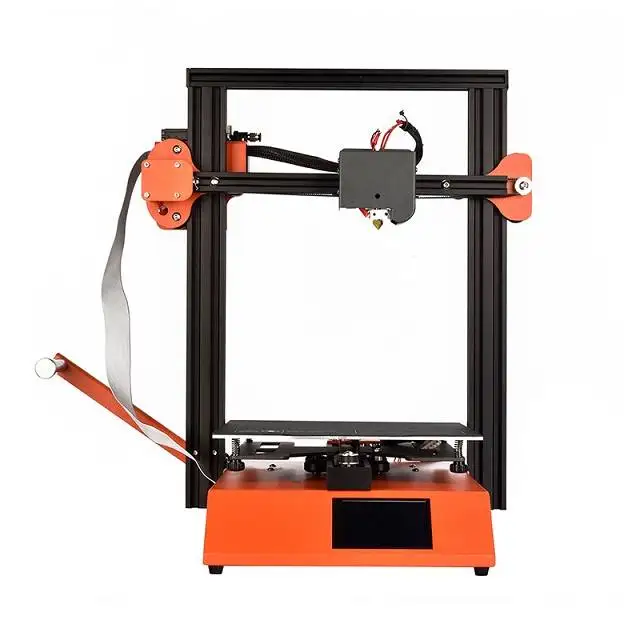 With efficient inert gas circulation, a reduced gas consumption is achieved in a secure and efficient operation. A new inert gas flow is used for optimum process conditions, whereby an efficient removal of flue gas from the process chamber is achieved. In addition to the attainment of constant conditions on the work surface, the beam entry glasses are also effectively protected from contamination.
With efficient inert gas circulation, a reduced gas consumption is achieved in a secure and efficient operation. A new inert gas flow is used for optimum process conditions, whereby an efficient removal of flue gas from the process chamber is achieved. In addition to the attainment of constant conditions on the work surface, the beam entry glasses are also effectively protected from contamination.
Optionally, a modular powder supply unit (PSV) can be connected to the machine to ensure a reliable powder supply to the SLM 280 2.0 throughout the entire production process.
The PSV uses a 90-liter powder tank which is sufficient for any production process. Manual filling of powder via individual powder bottles is not necessary. An ultrasonic sieve, which is integrated in the PSV, sieves the available powder just before it is fed into the process so that no oversized particles or foreign objects can find their way into the SLM process. The transport of powder between the PSV and the SLM machine is fully automatic and carried out via vacuum technology.
The PSV uses three independent conveying routes. In addition to supplying the freshly sieved metal powder to the SLM machine, a second conveying route returns the excess metal powder from the overflows back to the PSV. The third conveying route uses a manual suction device to remove the excess metal powder from the process chamber which is then conveyed directly back to the PSV. During this step, a new production process can already be started using the SLM machine whereat the powder supply to the SLM machine is then prioritized. Fresh powder is either supplied through the direct connection of powder containers to the powder tank from the PSV or through the emptying of the powder container in the process chamber via a suction device.
Powder transport, powder sieving and the storage of the powder take place in a closed system with inert gas atmosphere. Contactless powder handling ensures maximum safety at work.
3D Printers
Machine Type
3D PrintersCNC Routers3D ScannersLaser CuttersMetal PressesVacuum Forming MachinesHaptic DevicesInjection Molding Machines
TechnologyAnyfdmdmlsebmsls3dppolyjetmjpslalpdcjplomscpdlpcliplcmjfslmadamdupgdpldm
BrandAnyCTC LTDFLSUN3DMalyanStampanti 3DWanhao3D Bistro3D dreams3D Prima3d Quality3D Systems3DCeram3DConstructions3Dealo3Deometry3DGence3DiY3DKreator3DModularSystems3DP3Dquality3DragAdditive IndustriesAdditive Laser TechnologyAfiniaAfinia 3DAfinibotAgneeAirwolf 3DAlfawiseAlunarAnet 3DAnycubicAON3DApiumArcam ABArcelikArtilleryAsigaATOMAtomstackAurarumAuroraLabsB9CreationsBambu LabBCN3DBeam 3DBEEVERYCREATIVEBiboBigRepBIQUBlackBelt 3D BVBLB IndustriesBoa Impressão 3DBoXZYBQBRESSERBuilderCarbon 3DCaribou3dCELCetus3DConcept Laser MachinesConradCosineCraftUniqueCrealityCreatbotCreatebotCubiconDAGOMADediBotDeltaprintrDivide by zero technologyDIYDOBOTDremelDTMDWS LABE3DEaglemossEcubMakerELEGOOEmberEnvisionTecEOSEPAX 3DEryoneEuropac 3DEvo-TechExOneFarsoon TechnologiesFDM FinlandFebtop TechFELIXprintersFlashForgeFLUXFlyingBearFolger TechFormbotFormlabsFractalworksFSL3DFusion3G3DgCreateGeeetechGerman RepRapGizmo 3D PrintersGlobal 3D LabsGriffin 3DHBDHe3DHICTOPHIEHAHORI 3DHPHypercubeHyrel3Di3diFactory3DIntamsysJ Group RoboticsJariwala RoboticsJGAURORAJGMakerJoysMakerKelantKentstrapperKeyenceKingroonKings 3D PrintingKodama, Inc.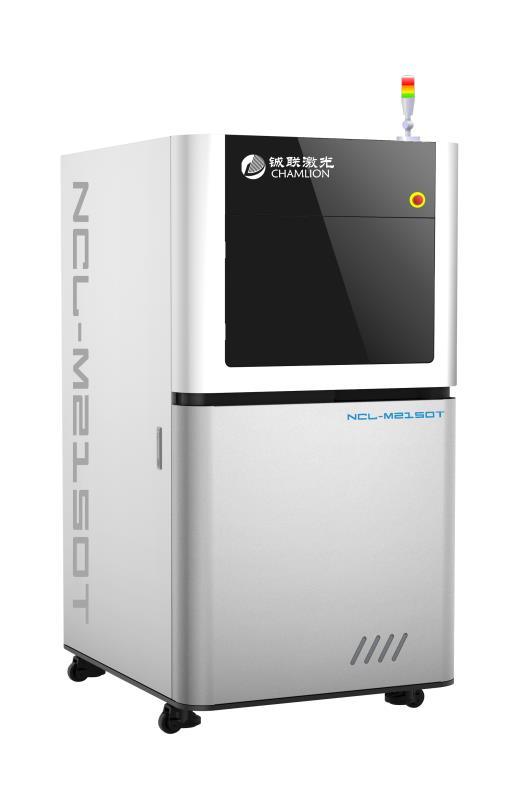 Kudo3DKywoo3DLAR TechnologiesLeapFrogLittleRPLongerLOTMAXXLulzBotM3DMagnumMakeItMaker's Tool WorksMakerbotMakerGearMakertech 3DMaker’s Tool WorksMankatiMark OneMarkforgedMass PortalMASSIVit 3DMassportalMatterHackersMbot 3DMcorMicromakeMiiCraftMilkshake3DMimakiMINGDAMinifactoryModixMonopriceMorgan 3D PrintersMytrix TechnologyNew MatterNexa3DNorthworks AutomationNOVA3DOrion AMPeopolyPhotocentric 3DPhrozenPicasoPolaroidPowerSpecPrint-RitePrintrbotProdwaysProject R3DPrusa 3DPxmalionQidi TechQU-BDRaise3DRapide 3dRatRigre:3DRenishawRepRapRigidBotRizeRobo 3DRobobeastRobotWorxSainSmartSecKitSedgwickSeeMeCNCSethi3DSharebotSheePEMShining 3DSIDLSindohSinteritSintratecSLM SolutionsSnapmakerSolidoodleSolidscapeSovol3dSparkMakerSprintRayStacker3DSTARTTStratasysSUNLUTenlog 3DTEVOTiertimeTinkerineTOP 3DTractus3DTriditiveTripodMakerTRIUMTronXYTurnigyTwotreesType A MachinesUcreaUltibotsUltimakerUnciaUnizUP3DUsongshineVellemanVisionMinerVoxelabWasp3dWEEDO 3DWeistekWiibooxWINBOWINPLUSWombotXYZPrintingZariboZmorphZONESTAR CreationZortraxZRapid TechZYLtechZyyx
Kudo3DKywoo3DLAR TechnologiesLeapFrogLittleRPLongerLOTMAXXLulzBotM3DMagnumMakeItMaker's Tool WorksMakerbotMakerGearMakertech 3DMaker’s Tool WorksMankatiMark OneMarkforgedMass PortalMASSIVit 3DMassportalMatterHackersMbot 3DMcorMicromakeMiiCraftMilkshake3DMimakiMINGDAMinifactoryModixMonopriceMorgan 3D PrintersMytrix TechnologyNew MatterNexa3DNorthworks AutomationNOVA3DOrion AMPeopolyPhotocentric 3DPhrozenPicasoPolaroidPowerSpecPrint-RitePrintrbotProdwaysProject R3DPrusa 3DPxmalionQidi TechQU-BDRaise3DRapide 3dRatRigre:3DRenishawRepRapRigidBotRizeRobo 3DRobobeastRobotWorxSainSmartSecKitSedgwickSeeMeCNCSethi3DSharebotSheePEMShining 3DSIDLSindohSinteritSintratecSLM SolutionsSnapmakerSolidoodleSolidscapeSovol3dSparkMakerSprintRayStacker3DSTARTTStratasysSUNLUTenlog 3DTEVOTiertimeTinkerineTOP 3DTractus3DTriditiveTripodMakerTRIUMTronXYTurnigyTwotreesType A MachinesUcreaUltibotsUltimakerUnciaUnizUP3DUsongshineVellemanVisionMinerVoxelabWasp3dWEEDO 3DWeistekWiibooxWINBOWINPLUSWombotXYZPrintingZariboZmorphZONESTAR CreationZortraxZRapid TechZYLtechZyyx
MaterialAny(taulman) PCTPE3D Color-inkjet PLA8K Resin304 Stainless Steel316L Steel PlasticA2 Tool SteelABSABS+ABS-CFABS-ESD7 (Static dissipative)ABS-M30ABS-RABS-like ResinABSiASAASA-CFAccura ClearVueAccura e-StoneAgilusAlumideAluminaAlumina ZirconiaAluminium AlSi10MgAluminium Alloy AlSi12Aluminium NitrideAluminum PLAAmphora HT5300Antero 800NA (PEKK)Antero 840CN03 (PEKK-ESD)Anti-Microbial PLA (Purement)Bio-based TPUBio-compatible (MED610)BioMed-ResinBiocompatible ABS (ABS-M30i)Biocompatible PC (PC-ISO)BlueCast CR3ABlueCast LSBlueCast OriginalBlueCast X-FiligreeBlueCast X-OneBlueCast X5BlueCast X10Brass PLABrick PLABronze PLACF-TPUCPE (co-polyester)CPE+Carbon FiberCastForm PSCastable ResinCastable Wax 40 ResinCeramic FilamentCeramic ResinChameleon PLA (Thermochromic)ClearBiomedResinCobalt-Chrome (CoCr)Color-Blending PLAColorFabb XT CF20 (PET-G)Color KitColorfabb HTConductive PLACopperCopper PLACordieriteCrystalFlex (SBR)Cyanate Ester (CE)D2 Tool SteelDURABIODental LT ResinDental Non-Castable ResinDental SG ResinDigital ABSDraft ResinDuraForm EXDuraForm FlexDuraForm GFDuraForm HSTDuraForm PA PlasticDuraForm® ProX™ PA PlasticDurable (PP-like) ResinDurusE-GumEPU 40 (polyurethane elastomer)ESD-Safe PCESD-Safe PETGESD-Safe PLAESD-Safe PVDFESD-safe PEKKElastic Resin (Soft and flexible)Elixir PLA (Extra Shiny)FLEX (Elastic TPE)FPU 50 (Flexible Polyurethane)FR-ABS (Flame Retardant)FabProElasticFabProFlexibleFabPro JewelCastFabProProtoFabProToughFiberglassFlexfill 98A TPUFlexible ResinFoaming PLAFormfutura ApolloXFormfutura FlexiFilFormfutura TitanXFull-color plastic (VisiJet C4 Spectrum)Full-color sandstone (VisiJet PXL)Fused SilicaGlass-reinforced NylonGlass-reinforced ResinGreen-TECGreen-TEC Pro CarbonGreen-TecProGrey Pro Resinh23 Tool SteelHD GlassHIPSHPLA-CFHP PA-12HSHT FiberglassHTPET+Heat Treatable PLA (HTPLA)High Reactive ResinHigh Temp ResinHigh Temperature (RGD525)HydroxyapatiteIglidur I150Impact PLAInconel 625 Ni625Inconel 718Innofil Pro1Jewelry Wax (Solidscape 3Z Model)Kevlar-reinforced nylon LaserForm A6LaserForm Ni718LaserForm™ Ti Gr. 1²LaserForm™ Ti Gr. 5²LaserForm™ Ti Gr. 23²Liqcreate Clear ImpactLiqcreate Composite-XLiqcreate Flexible-XLiqcreate Strong-XLiqcreate Tough-XMagnetic Iron PLAMaraging SteelMarble PETGMarble PLAMatte Fiber HTPLAMatte PLANanoceramic ResinNonOilenNylonNylon-CFNylon 6/69Nylon GF30OnyxOnyx ESDOnyx FROnyx FR-APA-12 with Glass BeadsPA-CFPA11 NylonPA12 NylonPA 2200PA Cast NylonPC-ABSPC-ABS with Carbon FiberPC-ASAPC-CFPC-PBTPCTGPEEKPEEK-CFPEI-CFPEKKPETPET-CFPETG PETG (Recycled)PETG-CFPETG MattePETT (T-glass)PLAPLA+PLA++PLA-CFPLA-RecycledPLA/PHAPLA 3D870 (APLA)PLA FlexPLA NX-2PLATECPOM (Delrin)PP-CFPPSF/PPSU (Heat and chemical resistant)PRO HSPRO HTPSUPVAPVDF (PolyvinylideneFluoride)PaperPolyCastPolyMax PLAPolySmooth™ (PVB)PolyamidePolycarbonate (PC)PolyphenyleneSulfidePolypropele-GF-30PolypropylenePrecise PLAPrintaMent PURE (matt)Raptor PLAResinRigid 10K ResinRigid 4000 ResinRigid Polyurethane (RPU)Rigid opaque ResinRigurRiziumSTRubber-like (TPU)Rubber-like ResinSBSST-130Silicon NitrideSilicone ResinSilicoreSomos 201Somos EvoLVe 128Somos NeXtSomos WaterShed XC 11122Stainless Steel 17-4 PHStainless Steel 316LStainless Steel 420 Bronze InfusedStandard acrylic ResinSteel PETGStoneFil PLAStrong ResinTPCTPE SEBS 95ATPU 60DTPU 70DTPU 95ATPU Shore 45-56 ATPU Shore 79ATPU powderTR250 ResinTango (Rubber-like material)Titanium (Ti6Al4V)Titanium Ti64Tough3000Tough PLATough ResinTranslucent RigidTricalcium PhosphateTungsten Fill PLAULTEM(PEI) 1010 CGULTEM(PEI) 9085 CGUV Color Сhanging PLAUltem (PEI) 1010Ultem (PEI) 9085Urethane Methacrylate (UMA)VeroVisiJet CE-BKVisiJet CE ElastomericVisiJet CR-CLVisiJet CR-WTVisiJet FTX CastVisiJet FTX resinVisiJet M2 ElastomericVisiJet M2 RigidVisiJet M3VisiJet M3 DentcastVisiJet M5VisiJet SL ClearVisiJet SL e-StoneVisiJet® EX200VisiJet® HR200VisiJet® SR200Visijet CE-NTVisijet CF-BKWaterClear ResinWax-like ResinWax Filament (MoldLay)Wood PLAZ-ABSZ-ASA ProZ-ESDZ-GLASSZ-HIPSZ-PCABSZ-PETGZ-PLAZ-PLA ProZ-ULTRATZirconia 3YZirconia 8YZortrax Basic ResinZortrax Resin PRObronzeFill - PLA/PHA + fine bronze colorFabb-XT (Amphora AM1800)copperFill - PLA/PHA + fine copper corkFill - PLA/PHA + fine cork fibrecoPLAiglidur I180nGen-CFnGen Amphora AM3300 (PET-G)nGen FLEXwoodFill - PLA/PHA + fine pinewood zp130 Powder
1²LaserForm™ Ti Gr. 5²LaserForm™ Ti Gr. 23²Liqcreate Clear ImpactLiqcreate Composite-XLiqcreate Flexible-XLiqcreate Strong-XLiqcreate Tough-XMagnetic Iron PLAMaraging SteelMarble PETGMarble PLAMatte Fiber HTPLAMatte PLANanoceramic ResinNonOilenNylonNylon-CFNylon 6/69Nylon GF30OnyxOnyx ESDOnyx FROnyx FR-APA-12 with Glass BeadsPA-CFPA11 NylonPA12 NylonPA 2200PA Cast NylonPC-ABSPC-ABS with Carbon FiberPC-ASAPC-CFPC-PBTPCTGPEEKPEEK-CFPEI-CFPEKKPETPET-CFPETG PETG (Recycled)PETG-CFPETG MattePETT (T-glass)PLAPLA+PLA++PLA-CFPLA-RecycledPLA/PHAPLA 3D870 (APLA)PLA FlexPLA NX-2PLATECPOM (Delrin)PP-CFPPSF/PPSU (Heat and chemical resistant)PRO HSPRO HTPSUPVAPVDF (PolyvinylideneFluoride)PaperPolyCastPolyMax PLAPolySmooth™ (PVB)PolyamidePolycarbonate (PC)PolyphenyleneSulfidePolypropele-GF-30PolypropylenePrecise PLAPrintaMent PURE (matt)Raptor PLAResinRigid 10K ResinRigid 4000 ResinRigid Polyurethane (RPU)Rigid opaque ResinRigurRiziumSTRubber-like (TPU)Rubber-like ResinSBSST-130Silicon NitrideSilicone ResinSilicoreSomos 201Somos EvoLVe 128Somos NeXtSomos WaterShed XC 11122Stainless Steel 17-4 PHStainless Steel 316LStainless Steel 420 Bronze InfusedStandard acrylic ResinSteel PETGStoneFil PLAStrong ResinTPCTPE SEBS 95ATPU 60DTPU 70DTPU 95ATPU Shore 45-56 ATPU Shore 79ATPU powderTR250 ResinTango (Rubber-like material)Titanium (Ti6Al4V)Titanium Ti64Tough3000Tough PLATough ResinTranslucent RigidTricalcium PhosphateTungsten Fill PLAULTEM(PEI) 1010 CGULTEM(PEI) 9085 CGUV Color Сhanging PLAUltem (PEI) 1010Ultem (PEI) 9085Urethane Methacrylate (UMA)VeroVisiJet CE-BKVisiJet CE ElastomericVisiJet CR-CLVisiJet CR-WTVisiJet FTX CastVisiJet FTX resinVisiJet M2 ElastomericVisiJet M2 RigidVisiJet M3VisiJet M3 DentcastVisiJet M5VisiJet SL ClearVisiJet SL e-StoneVisiJet® EX200VisiJet® HR200VisiJet® SR200Visijet CE-NTVisijet CF-BKWaterClear ResinWax-like ResinWax Filament (MoldLay)Wood PLAZ-ABSZ-ASA ProZ-ESDZ-GLASSZ-HIPSZ-PCABSZ-PETGZ-PLAZ-PLA ProZ-ULTRATZirconia 3YZirconia 8YZortrax Basic ResinZortrax Resin PRObronzeFill - PLA/PHA + fine bronze colorFabb-XT (Amphora AM1800)copperFill - PLA/PHA + fine copper corkFill - PLA/PHA + fine cork fibrecoPLAiglidur I180nGen-CFnGen Amphora AM3300 (PET-G)nGen FLEXwoodFill - PLA/PHA + fine pinewood zp130 Powder
Search
3D printers SLM Solutions GmbH
Application
Application
Professional
Industrial
Personal
Commercial
3D printer type
3D printer type
Tabletop
Food
Professional
For home
Chocolate
Jewelry
Russian
Reprap
Dental
Full color
Industrial
Not expensive
Medical
For training
Material type
Material type
Plastic
606
Metal
50
Photopolymer
245
Other
144
Manufacturer
Manufacturer
3D Systems
84
PICASO 3D
8
Stratasys Ltd
38
Leapfrog BV
6
EnvisionTEC
51
Myriwell
4
3D-Experts
3
PrintBox3D
4
FELIXrobotics
11
Solidoodle
8
WANHAO
32
ROKIT
5
SeeMeCNC
4
mUVe 3D LLC
1
RepRapPro
5
Formlabs
9
Afinia
1
Airwolf 3D
6
Type A Machines
2
iRapid
1
RoBo 3D Printer
3
Mixshop Inc
4
IonCoreLtd
1
Old World Laboratories
1
XYZprinting
13
Panowin Technologies Co. , Ltd.
, Ltd.
2
MiiCraft
7
Portabee 3D Printer
2
Zeepro
1
Pirate 3D
1
Qualup SAS
2
BEETHEFIRST
3
Heacent
2
Robot Factory
2
Kuhling&Kuhling
1
3Dfactories
3
Tangible Engineering USA Corporation
1
DWS Lab
1
Sedgwick
2
3DJoy
4
Futura Elettronica
1
Makible Ltd
2
ALT Design
1
Active 3D
2
Trinitylabs
1
Sumpod Ltd.
4
Brahma3
1
Hyrel 3D
5
Omni3D
4
BCN3D Technologies
7
Boots Industries
2
ORD Solutions
2
Ironvault
1
2PrintBeta
3
Unique Design
3
Hot Proceed
1
3DD Plas
2
York3dPrinters
1
Code-P
4
Deezmaker
3
Ruian Maitian Network Technology Co
2
CB-Printer
1
Print Technologies Pty Ltd.
5
MaukCC
1
Choc Edge Ltd
2
Shenzhen WeisTek Co.,Ltd
5
Delta Tower
2
Tegelbeckers Ltd
1
Deltaprinter
1
MindKits
1
Robot Co, Ltd
1
Romscraj
2
Fabmaker
1
Peerbhai Robotic
1
Sintermask GmbH
1
KL Services Group Inc
1
Fochif Mechatronics Technology Co.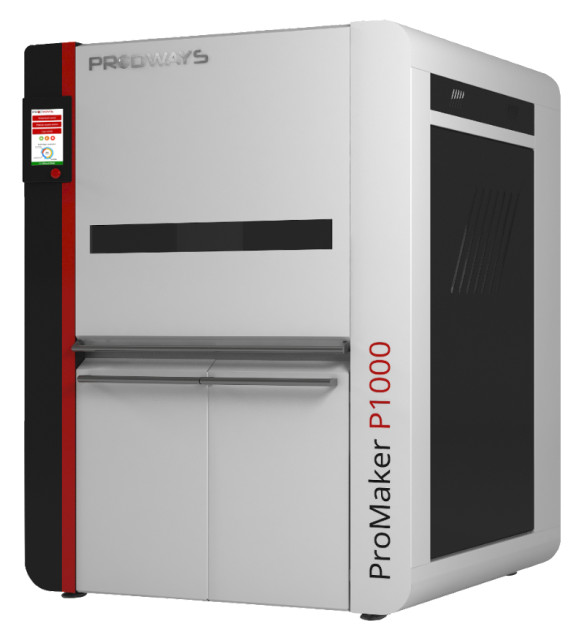 , Ltd
, Ltd
4
Teil3
1
Maker's Tool Works, LLC. nine0003
2
Gaminu
1
re:3D
1
inDimension3
4
Acuity Design
1
Essential Dynamics
1
Isis3D
1
Velleman
1
Kentstrapper
4
Blue Eagle Labs
1
Gubbels Engineering
2
Zortrax
8
3dBotic
1
MakerGear, LLC
1
Jelwek
1
it is 3D
2
Cablysa Systems, S. L.
L.
3
Ac123Dc
1
E3D Online
1
Hydraraptor
1
MakerBot Industries, LLC
8
Delta Micro Factory Corporation
3
Ultimaker B.V.
11
Solidscape Inc.
8
MBot3D
4
B9Creations
4
Jinhua Flashforge Technology Co., Ltd
26
Tinkerine Studio Ltd
3
Aleph Objects Inc.
4
DeltaMaker
1
Reprap Austria
3
IC3D LLC.
1
Ultibots, LLC.
2
Intelligent Machine Inc.
1
Metamaquina
1
Shenzhen Mootooh Engineering Co., Ltd. nine0003
1
Multitec GmbH
3
German RepRap GmbH
3
Sharebot
17
Nova 3D
1
QU-BD Inc.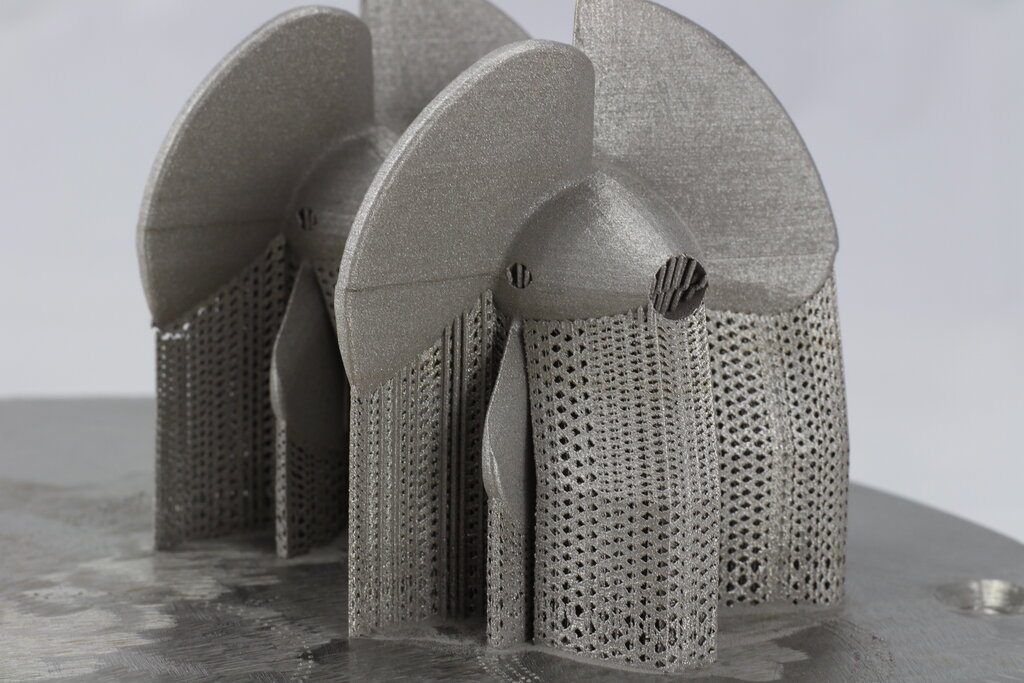 nine0003
nine0003
4
RDMCU
1
Full Spectrum Laser LLC
1
PieceMaker Technologies
1
Printbot, Inc.
7
Terawatt Industries
1
botObjects
1
Lunavast
2
Maker Farm
3
NWRepRap
1
eMotion Tech
1
Printed Worlds
1
Reprapsource
1
Twelvepro Co
1
Replicator Warehouse
1
Stellamove Inc. nine0003
nine0003
1
Make Mendel
6
Rapide 3D
2
Makealo
1
Crew Ltd.
1
Open cube
1
3D Kits
1
Coombes Solutions Ltd.
1
SHARK Limited Partnership
1
Smartfriendz
1
3D Monster
1
Kikai Labs
2
THY3D
1
Tantillus
1
RepRap Diffusion
1
QSQM International Co. nine0003
nine0003
1
Tumaker
1
Makism 3D Corp.
3
3dBotZ
1
ZMorph 3d
1
Eckertech Inc. nine0003
1
Imec Proto
6
miniFactory Oy Ltd
1
printMATE 3D
1
CMET Inc.
5
Arcam AB
6
3Geometry Manufacturing Systems Pvt Ltd
8
Electro Optical Systems
15
Trump Precision Machinery Co.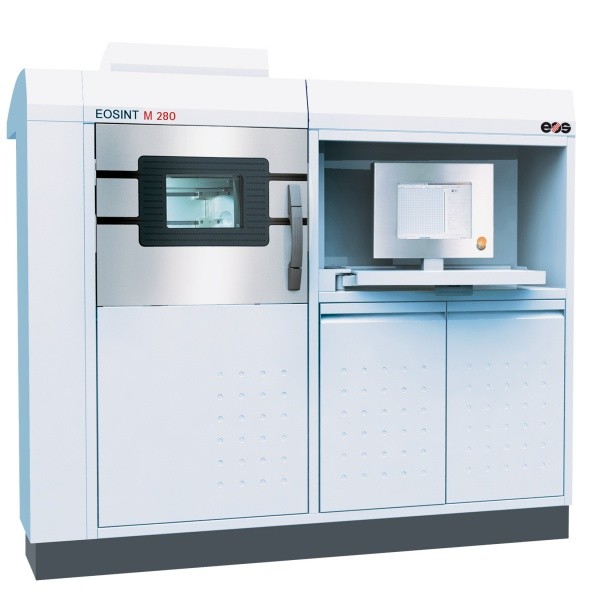 , Ltd
, Ltd
4
Wuhan Binhu Mechanical & Electrical Co., Ltd. nine0003
11
Optomec Inc.
1
Shaanxi Hengtong Intelligent Machine Co., Ltd.
9
Matsuura Machinery Corporation
1
ExOne Company, LLC
6
Concept Laser GmbH
9
Instrument Tech Co, Ltd
7
UnionTech
8
Renishaw plc
2
D-MEC Ltd.
3
Realizer GmbH
5
SLM Solutions GmbH
5
Fabriconic LLC
3
Mark Forged
8
Keyence Corporation
2
SYS + ENG
1
Lithoz GmbH
1
DWS s.r.l.
12
Beijing TierTime Technology Co. Ltd
17
Carima
3
Mcor Technologies Ltd.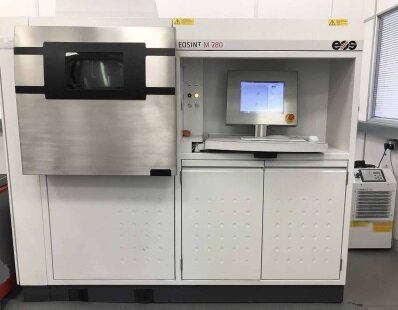 nine0003
nine0003
3
Asiga
11
Rapid Shape GmbH
14
solido ltd.
1
Blueprinter ApS
1
Kevvox Pte Ltd. nine0003
2
JER Education Technology Co., Ltd
1
Azuma Engineering Machinery Inc.
2
Space Monkey
1
Trimaker
1
Most Fun
1
Iniciativas 3D
1
IdeaLab 3d
1
MendBot Labs
Bonsai Lab
2
MakerDreams
1
i3Dbot Co. , Ltd
, Ltd
2
Natural Machines
1
Cyrus3D
ITALYmaker
Something3D
Cagelli Distribution
E Crew Vis
BigRep GmbH
2
Voxeljet Technology GmbH
5
Sciaky Inc.
Mankati
4
F&B rapid production
3
3DQuality
17
Workshop Churyumov
2
Unimix
2
Center for Additive Technologies
3
ENNOVA
1
Exclusive Solutions
2
Magnum
5
SHEKLA
1
D-Force
3
BigRep
4
Roland
1
Alphabet 3D
2
MAKEX
1
3D Master Kit
7
Shining 3D
25
3NOVATICA
3
AVS Robotics
1
IMPRINTA
11
Createbot
5
AIO Robotics
1
RK-3D
1
SPETSAVIA
3
3DiY
14
Wonwall
1
Apium Additive Technologies
3
3DSUN
1
Cheap3D
1
3rd
1
EGL3D
1
Creality 3D
42
UNIMATECH
2
VolgoBot
3
ZVER 3D
3
Zenith
2
MicroFactory
1
Hewlett Packard
2
Shenzhen Anet Technology Co Ltd
15
MASS PORTAL SIA
11
Cyberon
2
PHOTOCENTRIC
2
TotalZ
11
3dcon
2
Raise3D
6
OOO RUSSIAN ENGINEER
1
Vortex-3D
5
Flying bear
11
Print3D
5
ROBOINO
1
SoloPrint
1
Fun Distribution
1
Alekmaker
2
Cronos
2
TEVO 3D
9
3D printers from China
2
ZAV 3D printer
4
Epo3d
1
FLSUN 3D
3
WINBO
19
PROTOTYPE
1
UNIZ TECHNOLOGY
2
W2P Engineering GmbH
4
MAESTRO
1
Pi 3D printer
1
Shenzhen Tronxy Technology Co
23
Kelandi
1
Geeetech
21
3DCeram
2
Omaker
1
Builder 3D Printers
6
Creatable Labs
1
ROBOZE
3
Desktop Metal
1
Sintratec
2
CreatBot
10
ANYCUBIC
29
3dlaboratorio
2
OOO SPC "Lasers and Equipment"
2
Prusa Research
6
Prismlab
3
ivilol
2
Geralkom-3D
7
EqMex
1
Tsar3D
2
Zhuhai CTC Electronic Co. , Ltd
, Ltd
3
Shenzhen Aurora Technology Co., Ltd
6
Monoprice
1
Shenzhen Salon Technologies Co., Ltd.
1
Shenzhen Sundystar Technology Co., Ltd
2
Shenzhen Easythreed Technology Co., Ltd
1
WOW Innovation Technology Co., Ltd. nine0003
2
Jinhua Xingzhe 3D Technology Co., Ltd
1
Shenzhen Zhongxin Microscience Software Co., Ltd.
1
Shenzhen Yaying Trading Co.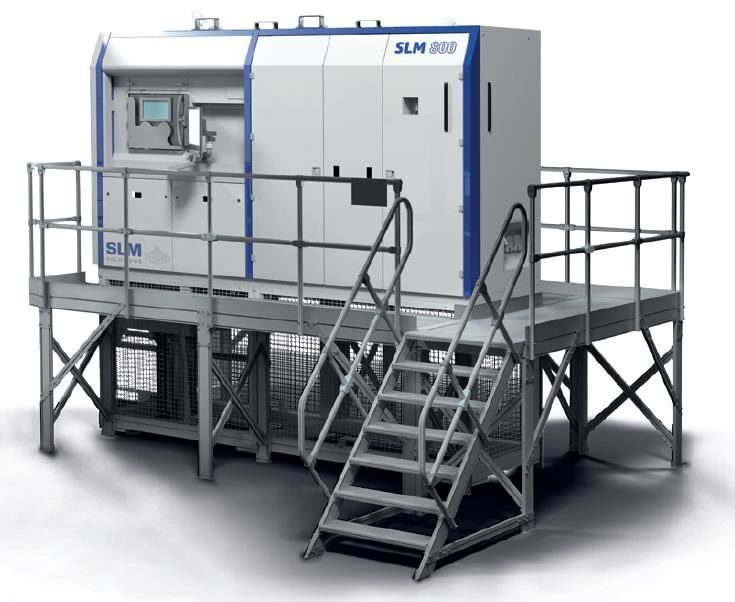 , Ltd
, Ltd
5
Z Bolt Co.
2
Anisoprint
1
Shanghai 3D ARTEL Science and Technology Co.
3
FABERANT 3D printers
1
Self-assembly 3D printers
4
Z Rapid Tech
21
Zonestar
13
3DGence
3
BLB Industries
1
Hard Light
1
Stereotech
2
TPM3D
7
Artillery
4
Phrozen Tech Co. , Ltd.
, Ltd.
8
INDIGO 3D
1
Aconity3d
6
OR Laser
3
Farsoon Technologies
5
QIDI Technology
11
Shenzhen Twotrees Technology Co., Ltd.
7
Mingda
18
Elegoo
14
Longer
9
Sunhockey
2
DUPAS3D
1
Kelant
5
Voxelab
3
DIYMARIA
1
VSHAPER
CREASEE
CNC Barcenas
5
Vistar
11
Kingroon
1
IdeaFormer
3
F2 Innovations
3
Sindoh
8
Eplus3D
8
Print Technology
Print Technology
Plastic Jet Printing (PJP)
8
MultiJet Modeling (MJM) Technology
1
SLA printing technology
Sterolithography (SLA) technology
2
Film Transfer Imaging (FTI)
MultiJet Printing (MJP)
20
Multi-Jet Modeling (MJM) Technology
2
Stereolithography (SLA)
115
Selective Laser Sintering (SLS)
65
Direct Metal Sintering (DMS)
6
Granular
5
Fused deposition modeling (FDM/FFF)
962
DoD/SCP Technology
6
PolyJet 3D printing Technology
19
The EnvisionTEC 3D-Bioplotter 3D printing technique
2
Direct Light Projection (DLP)
31
Photopolymerization
Digital Light Projection (DLP)
5
Digital Light Processing (DLP)
64
Additive Layer Manufacturing (ALM)
2
Laser Stereolithography (LSLA)
1
Direct Light Processing (DLP)
1
Electron Beam Melting (EBM)
6
Laser welding CLAD
6
Laser sintering (LS)
4
Layer by layer manufacturing (LOM)
5
Selective laser melting (SLM)
31
Laser Engineered Net Shaping (LENS)
1
Direct Metal Laser Sintering (DMLS)
11
Laser metal melting (LC)
10
Direct Metal Tooling (DMT)
7
Solid Creation System (SCS)
3
Ultrasonic Additive Manufacturing (UAM)
3
Composite Filament Fabrication (CFF)
1
Drop on Demand (DOD)
1
Lithography Ceramic Manufacturing
1
Melted and Extruded Modeling (MEM)
7
Drop-On-Demand (DOD)
Sliding Separation Process (SSP)
9
Smooth Curvature Printing (SCP)
2
Plastic Sheet Lamination (PSL)
1
Selective Heat Sintering (SHS)
1
ColorJet Printing (CJP)
7
Micro-SLA
1
DLP-SLA
3
WDM (Layer Waxing)
2
SLA-sla
Direct Metal Printing (DMP)
7
HP Multi Jet Fusion technology
2
3D Daylight Polymer Printing (DPP)
2
Smart-Positioning-System Technology (SPS)
2
LCD Stereolithography
62
UV LED DLP
4
Single Pass Jetting (SPJ)
1
Atomic Diffusion Additive Manufacturing (ADAM)
1
bioprinting
3
Powder Binder Jetting (PBJ)
10
Reset Filters
3D Printing Technologies - FDM, FFF, SLA, DLP, PolyJet, CJP, SLS, SLM
FUSED DEPOSITION MODELING PRINT TECHNOLOGY – + FDM
One of the most popular, simple and cheap 3D printing technologies is Fused Depsition Modeling.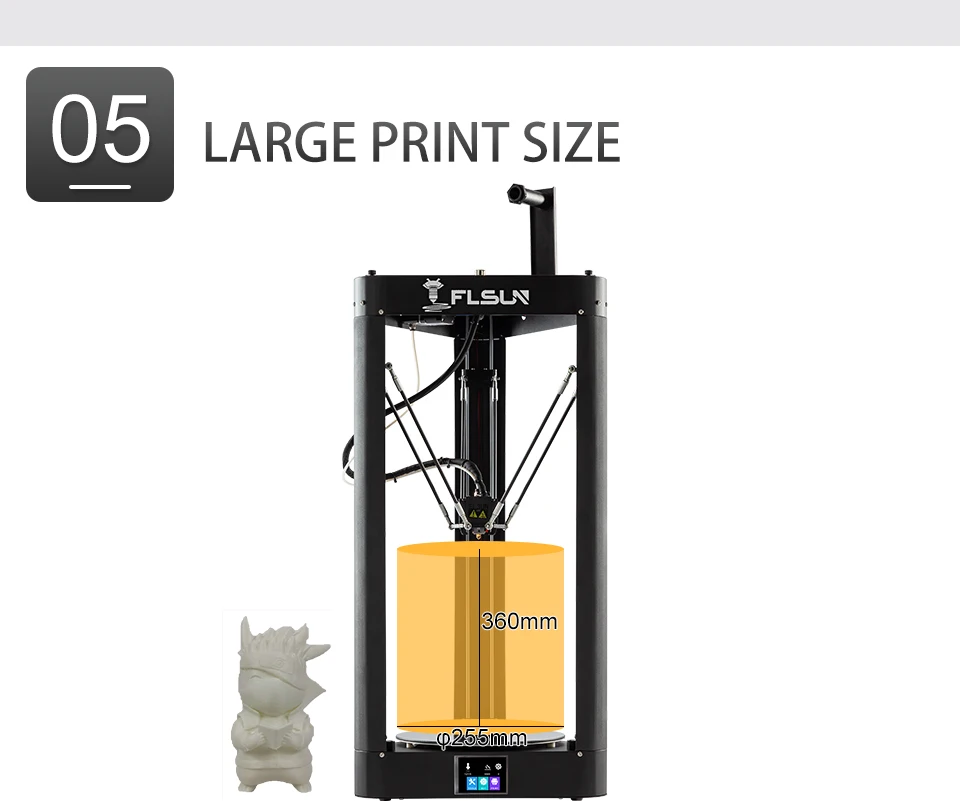 The technology was invented more than 20 years ago and implemented by Stratasys, and still it remains the most popular. The principle of building a prototype using this method is simple and clear. The simulated 3D object in STL format is transferred to the 3D printer software. After placing the model in a virtual working chamber (automatically or manually), cutting the model into horizontal layers, the 3D printing process begins. The extruder print head melts the filament, laying down layer by layer according to the model data. If necessary, before starting printing, auxiliary structures (supports) are automatically or manually placed on a virtual 3D model, which, after printing, can be removed with a special solution or manually. nine1653 There are many types of equipment that print using this technology. They differ in terms of accuracy, the number of print heads, the size of the working platform, the presence or absence of a closed working chamber, consumable options, etc. There are models that support the ability to use different materials when printing.
The technology was invented more than 20 years ago and implemented by Stratasys, and still it remains the most popular. The principle of building a prototype using this method is simple and clear. The simulated 3D object in STL format is transferred to the 3D printer software. After placing the model in a virtual working chamber (automatically or manually), cutting the model into horizontal layers, the 3D printing process begins. The extruder print head melts the filament, laying down layer by layer according to the model data. If necessary, before starting printing, auxiliary structures (supports) are automatically or manually placed on a virtual 3D model, which, after printing, can be removed with a special solution or manually. nine1653 There are many types of equipment that print using this technology. They differ in terms of accuracy, the number of print heads, the size of the working platform, the presence or absence of a closed working chamber, consumable options, etc. There are models that support the ability to use different materials when printing. There are also industrial FDM 3D printers and personal ones.
There are also industrial FDM 3D printers and personal ones.
The following materials can be used in FDM 3D printing: nine0003
- ABS
- PLA
- SBS plastic
- Nylon
- Polycarbonate
- HIPS support material
- PVA support material
- PETG plastic
- FLEX rubber-like plastic
- RUBBER plastic with rubber properties
The most popular materials are ABS and PLA. Products printed using FDM technology are characterized by elasticity, strength and stable physical characteristics, depending on the selected material. The construction accuracy varies from 0.027mm to 1mm. As a rule, the printed object has a layered (ribbed) surface, the severity of which depends on the thickness of one layer. This effect can be eliminated by post-processing with chemicals or grinding. nine1653 The advantages of FDM 3D printing technology include sufficient speed and ease of manufacture of products, safety, high accuracy, a wide choice of materials, as well as ease of use and maintenance of equipment. In addition, consumables for printing in this way are affordable. All this together makes this technology the most highly competitive and affordable in economic terms.
In addition, consumables for printing in this way are affordable. All this together makes this technology the most highly competitive and affordable in economic terms.
FDM 3D printing technology can be used for rapid prototyping and even small series production. Depending on the selected consumable material, this technology can be used to create parts of mechanisms, toys, interior items, jewelry, souvenirs and much more. The use of high-strength engineering thermoplastics makes it possible to apply this 3D printing method to products used in the aerospace industry. nine1653 Our company has several 3D printers working on this technology. You can order high-quality 3D printing using FDM technology from us with any of the available materials and in any available color option. We guarantee you the quality and efficiency of order execution of any degree of complexity.
To order 3D printing using FDM technology, you need to send us a file in STL format. Trust our professionalism and take advantage of the most affordable 3D printing.
STEREOLITHOGRAPHY PRINT TECHNOLOGY – + SLA
SLA 3D printing technology or laser stereolithography is based on the layer-by-layer curing of a liquid photopolymer under the action of a laser beam. The technology was invented in 1986 by Charles W. Hull, who founded 3D Systems, which manufactures 3D printers that print using this technique.
Photopolymer, which in this case acts as a consumable, is a resinous substance that changes its properties under the influence of ultraviolet radiation - it polymerizes and hardens. In this case, the wavelength and time of exposure to radiation will depend on the environmental conditions and the specific material. nine1653 The principle of building a model using laser stereolithography technology at the initial level is similar to any other - the modeled object in STL format is loaded into the 3D printer software, placed in a virtual working chamber and cut into layers. Photopolymer resin is poured into a special container. It contains a working platform on which the part will be built. Initially, the working platform is set so that it is covered with the thinnest layer of photopolymer (0.05-0.13 mm). This will be the size of the layer when printed. Then the laser is turned on, it irradiates the areas that will later become parts of the finished product. As a result of irradiation, the material hardens and the working platform sinks to the extent of the layer. The algorithm repeats again until all programmed layers are exhausted. Then the finished product is immersed in a special bath, into which a composition is poured to remove excess elements. And at the end, the product is again irradiated so that it gains maximum strength. nine1653 Stereolithography, like most other 3D printing technologies, requires supports. After printing is completed, they are removed manually.
Photopolymer resin is poured into a special container. It contains a working platform on which the part will be built. Initially, the working platform is set so that it is covered with the thinnest layer of photopolymer (0.05-0.13 mm). This will be the size of the layer when printed. Then the laser is turned on, it irradiates the areas that will later become parts of the finished product. As a result of irradiation, the material hardens and the working platform sinks to the extent of the layer. The algorithm repeats again until all programmed layers are exhausted. Then the finished product is immersed in a special bath, into which a composition is poured to remove excess elements. And at the end, the product is again irradiated so that it gains maximum strength. nine1653 Stereolithography, like most other 3D printing technologies, requires supports. After printing is completed, they are removed manually.
The main advantages of stereolithography technology are the highest precision and the ability to create the smallest and thin-walled objects. The technique is distinguished by easy post-processing of products and their almost perfect surface. The disadvantage of this technology is the impossibility of using several materials at once. Color printing is also not possible. The properties of the model and its color will determine the initial characteristics of one photopolymer. In addition, the cost of such printing and equipment is not cheap. nine1653 Due to the fact that stereolithography allows you to get a model of almost any degree of complexity, the main scope of this 3D printing is research. And due to the highest accuracy and detail, this technique is used in medicine, in particular in dentistry. Also, printed models are in demand in art, jewelry, museum work and restoration. There are photopolymers that can be used to print molded models. The model printed on a 3D printer, in this case, is poured with molding sand and placed in an oven for annealing at a temperature of 1000 degrees. As a result, the polymer burns out without leaving a trace, and the resulting form can be used for pouring metal under vacuum.
The technique is distinguished by easy post-processing of products and their almost perfect surface. The disadvantage of this technology is the impossibility of using several materials at once. Color printing is also not possible. The properties of the model and its color will determine the initial characteristics of one photopolymer. In addition, the cost of such printing and equipment is not cheap. nine1653 Due to the fact that stereolithography allows you to get a model of almost any degree of complexity, the main scope of this 3D printing is research. And due to the highest accuracy and detail, this technique is used in medicine, in particular in dentistry. Also, printed models are in demand in art, jewelry, museum work and restoration. There are photopolymers that can be used to print molded models. The model printed on a 3D printer, in this case, is poured with molding sand and placed in an oven for annealing at a temperature of 1000 degrees. As a result, the polymer burns out without leaving a trace, and the resulting form can be used for pouring metal under vacuum.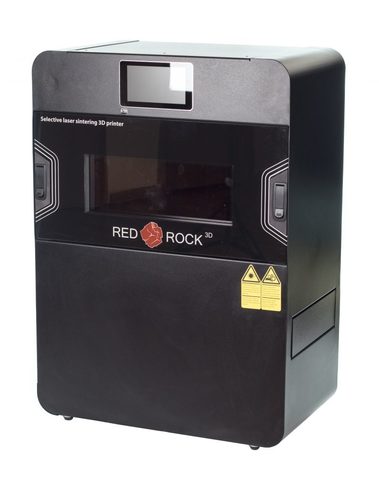 As the metal cools, the mold breaks and the metal part is removed. nine1653 In our company you can order 3D printing using SLA technology. We have in our arsenal professional 3D printers using this technology and a wide range of photopolymer resins with various characteristics for 3D printing. We guarantee you high quality and prompt execution of the order. To order 3D printing using the laser stereolithography method, you need to provide us with a file in STL format.
As the metal cools, the mold breaks and the metal part is removed. nine1653 In our company you can order 3D printing using SLA technology. We have in our arsenal professional 3D printers using this technology and a wide range of photopolymer resins with various characteristics for 3D printing. We guarantee you high quality and prompt execution of the order. To order 3D printing using the laser stereolithography method, you need to provide us with a file in STL format.
Get the most out of high-precision, high-detail stereolithographic 3D printing. nine1653
DIGITAL LIGHT PROCESSING PRINT TECHNOLOGY – + DLP
DLP 3D printing is one of the most accurate and fastest 3D printing methods. It is based on the technology that Larry Hornbeck invented for multimedia projectors. The peculiarity lies in the use of a special mirror matrix. Each individual pixel of this matrix is a microscopic mirror. nine1653 DLP stands for Digital Light Processing, which means "Digital Light Processing". Thus, this technology is one of the varieties of photopolymer 3D printing and photopolymer resin is used as a consumable. This resin is irradiated with projected light from the LEDs and hardens. The technology is very similar to stereolithography. However, with SLA 3D printing, each layer is, as it were, loomed with laser beams. And in DLP technology, the layer is completely projected onto a photopolymer using the same matrix with micromirrors, that is, this method is more like stamping. Thus, while maintaining the highest accuracy of 3D printing, it was possible to significantly increase its speed. At the moment, the speed of DLP printing is several times higher than FDM, SLM and SLA printing. For this reason, the DLP 3D printing technique is one of the most promising. nine1653 The thickness of one layer when printing using DLP technology is 10-15 microns, which is basically similar to the indicators for SLA 3D printing technology. For comparison, the FDM method implies a minimum thickness of at least 50 microns.
Thus, this technology is one of the varieties of photopolymer 3D printing and photopolymer resin is used as a consumable. This resin is irradiated with projected light from the LEDs and hardens. The technology is very similar to stereolithography. However, with SLA 3D printing, each layer is, as it were, loomed with laser beams. And in DLP technology, the layer is completely projected onto a photopolymer using the same matrix with micromirrors, that is, this method is more like stamping. Thus, while maintaining the highest accuracy of 3D printing, it was possible to significantly increase its speed. At the moment, the speed of DLP printing is several times higher than FDM, SLM and SLA printing. For this reason, the DLP 3D printing technique is one of the most promising. nine1653 The thickness of one layer when printing using DLP technology is 10-15 microns, which is basically similar to the indicators for SLA 3D printing technology. For comparison, the FDM method implies a minimum thickness of at least 50 microns.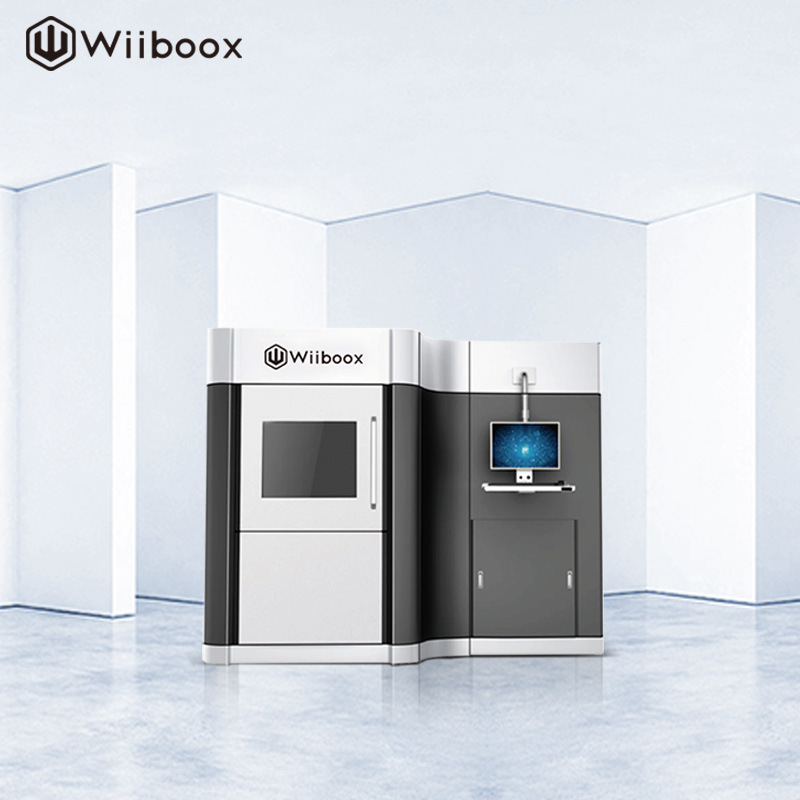
Since DLP printers are the main competitors of SLA printing, their application is about the same. They can print products for dentistry, jewelry, complex designs and even souvenirs. The technology is also in demand in the research area.
Photopolymers used in 3D printing with this method are diverse, and you can choose a material with the desired characteristics. For example, there are materials that mimic the properties of ABS plastic, hard engineering plastics, and even rubber. However, it is important to know that in some cases, under the influence of light, photopolymer products can crack and become brittle. This technology implies the impossibility of using several materials at once. Color printing is also not possible. The properties of the model and its color will determine the initial characteristics of one photopolymer. nine1653 However, there is also a drawback to DLP technology - as in the case of SLA 3D printers, the cost of equipment is very high, as in principle the price of photopolymers. Not every, even a large company, can afford such a 3D printer.
Not every, even a large company, can afford such a 3D printer.
But this does not mean at all that you will not be able to take advantage of the speed and advantages of DLP printing, because you have the opportunity to order 3D printing on such a 3D printer in our company. To do this, you just need to provide us with an STL file with the desired model. We guarantee you prompt execution of the order and high quality. nine1653 Take advantage of high-quality, fast, high-precision DLP printing.
PRINT TECHNOLOGY LED DISPLAY – + LED
One of the varieties of DLP 3D printing technology is LED 3D printing. That is, this method is based on the same digital light processing (as Digital Light Processing stands for). However, in devices for LED 3D printing, instead of a mirror chipped matrix, there is an LED display that immediately highlights a whole layer on the material, like a kind of light stamp. Using an LED display allows you to increase the speed of 3D printing. So it takes about 10-15 minutes to 3D print 2.5 cm along the Z-axis, and it's really fast. Although the print speed in any case will directly depend on the thickness of one layer. nine1653 As a consumable material, a photopolymer resin is used, which polymerizes under the action of ultraviolet light, that is, changes its qualities, passing from a semi-liquid state to a solid one. There are many options for photopolymers, among which there are materials that, after the polymerization process, imitate the characteristics of solid, including engineering plastics. There are also those that are very similar to classic rubber after hardening, that is, they have the same strength and elasticity indicators. You can also choose biocompatible photopolymers. When choosing a material for printing, you should be guided by the technical characteristics and scope of a particular photopolymer. nine1653 Like any other photopolymer 3D printing, LED technology is characterized by the highest precision and detail.
Using an LED display allows you to increase the speed of 3D printing. So it takes about 10-15 minutes to 3D print 2.5 cm along the Z-axis, and it's really fast. Although the print speed in any case will directly depend on the thickness of one layer. nine1653 As a consumable material, a photopolymer resin is used, which polymerizes under the action of ultraviolet light, that is, changes its qualities, passing from a semi-liquid state to a solid one. There are many options for photopolymers, among which there are materials that, after the polymerization process, imitate the characteristics of solid, including engineering plastics. There are also those that are very similar to classic rubber after hardening, that is, they have the same strength and elasticity indicators. You can also choose biocompatible photopolymers. When choosing a material for printing, you should be guided by the technical characteristics and scope of a particular photopolymer. nine1653 Like any other photopolymer 3D printing, LED technology is characterized by the highest precision and detail. The thickness of one layer is only 10-15 microns. With its help, you can print thin-walled products, objects with complex geometry. Photopolymers practically do not shrink and do not change their geometry after hardening, and this is also an advantage, especially when it is necessary to print anatomically accurate models. The DLP LED 3D printing technology itself, although it provides for a layer-by-layer method for creating a model, still does not differ in pronounced layering of the finished model. The surface is almost perfectly smooth, requiring no additional processing. nine1653 If complex objects are printed, support must be used. They can be set in automatic or manual mode immediately before printing during the positioning of the model in the virtual working chamber. These supports are subsequently removed manually.
The thickness of one layer is only 10-15 microns. With its help, you can print thin-walled products, objects with complex geometry. Photopolymers practically do not shrink and do not change their geometry after hardening, and this is also an advantage, especially when it is necessary to print anatomically accurate models. The DLP LED 3D printing technology itself, although it provides for a layer-by-layer method for creating a model, still does not differ in pronounced layering of the finished model. The surface is almost perfectly smooth, requiring no additional processing. nine1653 If complex objects are printed, support must be used. They can be set in automatic or manual mode immediately before printing during the positioning of the model in the virtual working chamber. These supports are subsequently removed manually.
LED technology implies the impossibility of using several materials at once. Color 3D printing is also not possible. The properties of the finished prototype and its color will determine the initial characteristics of the photopolymer used. nine1653 The scope of LED 3D printing does not differ in principle from the scope of DLP printing, since this technology is, in fact, its improvement. The technology is in demand in the production of hearing aids and earmolds, in dentistry and orthodontics, as well as in jewelry. Due to the high accuracy and detail of 3D objects printed using this technology, products will also be in demand in the field of research and engineering activities.
nine1653 The scope of LED 3D printing does not differ in principle from the scope of DLP printing, since this technology is, in fact, its improvement. The technology is in demand in the production of hearing aids and earmolds, in dentistry and orthodontics, as well as in jewelry. Due to the high accuracy and detail of 3D objects printed using this technology, products will also be in demand in the field of research and engineering activities.
LED 3D printer is very expensive. However, this does not mean that its benefits are not available to you. You can order 3D printing using LED technology in our company. We offer you a large selection of photopolymer resins for printing and guarantee the high quality of models, in full compliance with the provided STL-file, and the prompt execution of the order. nine1653 Take full advantage of LED technology with our help.
POLYJET PRINT TECHNOLOGY – + PJ
PolyJet is a revolutionary 3D printing technology that is a powerful tool for high performance additive manufacturing.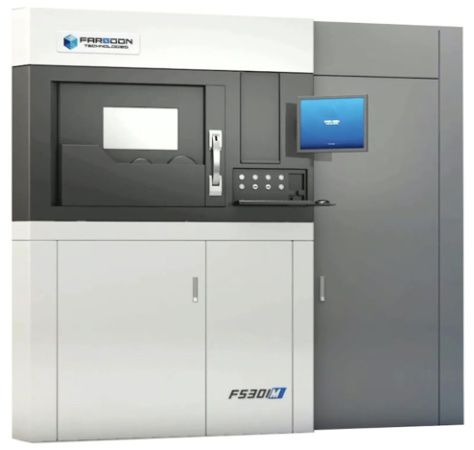 The technique was invented and patented by Stratasys. The operation of a PolyJet 3D printer is very similar to a conventional, well-known inkjet printer, but printing is carried out not on paper and not with simple ink, but on a special substrate in the chamber, and an acrylic-based liquid photopolymer acts as a material. nineThe 1653 3D printer supporting PolyJet technology is equipped with a special print head with nozzles. There can be several printheads, which allows you to print faster and even prototyping several objects at once. The printing process is carried out by dosed deposition of a photopolymer. One layer of 16 microns is sprayed at a time. Then this layer is exposed to an ultraviolet lamp and the photopolymer turns into a hard plastic. After that, the working platform with the substrate is lowered, and the algorithm is repeated again. When printing complex geometric shapes, a support material is used. For this technology, a special gel-like material has been created, which is easily removed with plain water or hands.
The technique was invented and patented by Stratasys. The operation of a PolyJet 3D printer is very similar to a conventional, well-known inkjet printer, but printing is carried out not on paper and not with simple ink, but on a special substrate in the chamber, and an acrylic-based liquid photopolymer acts as a material. nineThe 1653 3D printer supporting PolyJet technology is equipped with a special print head with nozzles. There can be several printheads, which allows you to print faster and even prototyping several objects at once. The printing process is carried out by dosed deposition of a photopolymer. One layer of 16 microns is sprayed at a time. Then this layer is exposed to an ultraviolet lamp and the photopolymer turns into a hard plastic. After that, the working platform with the substrate is lowered, and the algorithm is repeated again. When printing complex geometric shapes, a support material is used. For this technology, a special gel-like material has been created, which is easily removed with plain water or hands. nine1653 A key feature of PolyJet 3D printing technology is the ability to use multiple materials in one print run. At the same time, there are models of 3D printers that can mix photopolymers in various proportions, obtaining a variety of composite materials with certain characteristics. Also, this technology is characterized by the possibility of complex color reproduction. That is, it is possible to use color printing, the palette of which includes about 1000 colors and shades. In fact, it is the only additive manufacturing technology that supports these capabilities. nine1653 Other advantages of the method include: high printing speed, high accuracy and detail, perfect surface and generally excellent quality of printed objects. In addition, a wide range of materials allows you to create objects of almost any kind. More than 100 different photopolymer resins can be used as a base, mixing of which allows obtaining materials from transparent to completely opaque, from hard to elastic and rubbery.
nine1653 A key feature of PolyJet 3D printing technology is the ability to use multiple materials in one print run. At the same time, there are models of 3D printers that can mix photopolymers in various proportions, obtaining a variety of composite materials with certain characteristics. Also, this technology is characterized by the possibility of complex color reproduction. That is, it is possible to use color printing, the palette of which includes about 1000 colors and shades. In fact, it is the only additive manufacturing technology that supports these capabilities. nine1653 Other advantages of the method include: high printing speed, high accuracy and detail, perfect surface and generally excellent quality of printed objects. In addition, a wide range of materials allows you to create objects of almost any kind. More than 100 different photopolymer resins can be used as a base, mixing of which allows obtaining materials from transparent to completely opaque, from hard to elastic and rubbery. This is truly a new standard for realism in the most complex prints. PolyJet technology allows you to achieve perfect surface smoothness and imitate any even the most subtle texture. The camera of the PolyJet 3D printer is quite large, but if you need to print a large object, then it can be broken into parts, which are then simply glued together. nine1653 The only disadvantage of the technology is its high cost. The equipment is very expensive, and photopolymer resins are not cheap. But this does not mean that you cannot use this technology, because you have the opportunity to order 3D printing using PolyJet technology in our company. In a short time, we will implement your project on our own 3D printer. All you need is to provide us with the STL file.
This is truly a new standard for realism in the most complex prints. PolyJet technology allows you to achieve perfect surface smoothness and imitate any even the most subtle texture. The camera of the PolyJet 3D printer is quite large, but if you need to print a large object, then it can be broken into parts, which are then simply glued together. nine1653 The only disadvantage of the technology is its high cost. The equipment is very expensive, and photopolymer resins are not cheap. But this does not mean that you cannot use this technology, because you have the opportunity to order 3D printing using PolyJet technology in our company. In a short time, we will implement your project on our own 3D printer. All you need is to provide us with the STL file.
PolyJet 3D printing technology is truly limitless. nine1653
COLOR JET PRINTING TECHNOLOGY – + CJP
Color inkjet 3D printing - CJP (ColorJet Printing) technology - a patented technique invented by 3D Systems.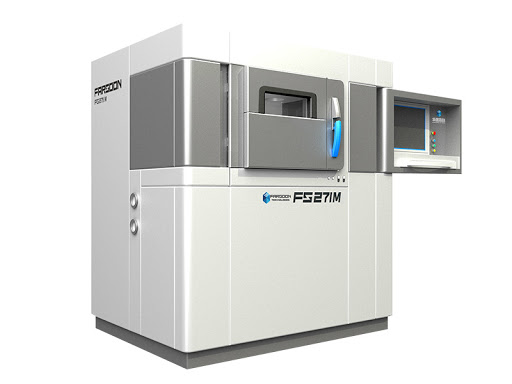 It consists in layer-by-layer gluing and coloring of the powder gypsum composite. 3D printing of this type is based on a technique called 3DP, which is its improvement. nine1653 3D printing by this method is based on the use of two materials: base and binder. To create the base layer, a consumable of the main type is used. It consists of gypsum mixed with a polymer. And the binder is used for gluing and staining the layers.
It consists in layer-by-layer gluing and coloring of the powder gypsum composite. 3D printing of this type is based on a technique called 3DP, which is its improvement. nine1653 3D printing by this method is based on the use of two materials: base and binder. To create the base layer, a consumable of the main type is used. It consists of gypsum mixed with a polymer. And the binder is used for gluing and staining the layers.
ColorJet Printing 3D printer has two cameras. A gypsum composite is poured into one of them, and the second chamber is used to remove excess material. The model is "grown" in layers. A special roller distributes a thin layer of material on the working platform. The print head applies the adhesive and colors the main consumable particles. All this is carried out in accordance with the loaded mathematical 3D model. The working surface is lowered by the amount of the layer (0.1016 mm), and the roller again applies a layer of gypsum composite powder, and so on until the model is printed to the end.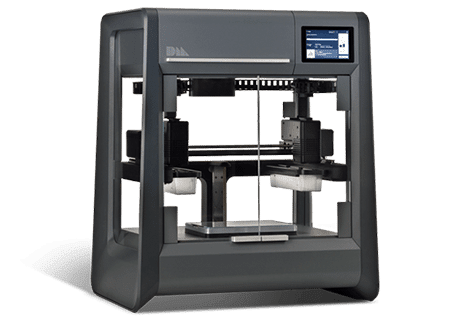 nine1653 ColorJet Printing technology has a relatively low cost of printed models. Its advantage is the absence of the need for supports, since the non-glued material will act as supporting structures. In addition, the material that was not used during printing can be reused. It turns out that this method of additive manufacturing is waste-free.
nine1653 ColorJet Printing technology has a relatively low cost of printed models. Its advantage is the absence of the need for supports, since the non-glued material will act as supporting structures. In addition, the material that was not used during printing can be reused. It turns out that this method of additive manufacturing is waste-free.
The CJP technology is the only one that uses the CMYK printing color palette. This palette includes 390 thousand colors and shades. The material is dyed during the gluing of the layer, resulting in details with excellent color reproduction.
The accuracy of building a model by this method is very high, the minimum printed element has dimensions of 0.1-0.4 mm. The thickness of the walls of the prototype, which will not collapse under their own weight, is 0.102-0.089 mm.
Models printed with ColorJet Printing have a typically gypsum rough surface that is highly hygroscopic. The strength of the models is average. However, finished models are easy to sand, paint and glue. To improve the characteristics of the model and protect them from moisture, you can cover the surface with varnishes, waxes, resins, as well as all kinds of fixatives. nine1653 The technology can be used for 3D printing of architectural models, product presentations, souvenirs, miniatures, etc. Despite the fact that the products are of low strength, they allow you to visually evaluate the prototypes.
To improve the characteristics of the model and protect them from moisture, you can cover the surface with varnishes, waxes, resins, as well as all kinds of fixatives. nine1653 The technology can be used for 3D printing of architectural models, product presentations, souvenirs, miniatures, etc. Despite the fact that the products are of low strength, they allow you to visually evaluate the prototypes.
CJP 3D printer has impressive dimensions and is quite expensive, despite the fact that the cost of printed prototypes is low, not everyone can afford such pleasure. In our company, you can order 3D printing using ColorJet Printing technology. We guarantee you prompt execution of the order and full compliance of the prototype with the modeled object. All you need is to provide us with an STL file with a 3D model. nine1653 Take advantage of CJP 3D printing technology with our help and appreciate all its advantages in practice.
SELECTIVE LASER SINTERING PRINT TECHNOLOGY – + SLS
Selective, that is, selective, laser sintering is a 3D printing technology that was created back in 1979.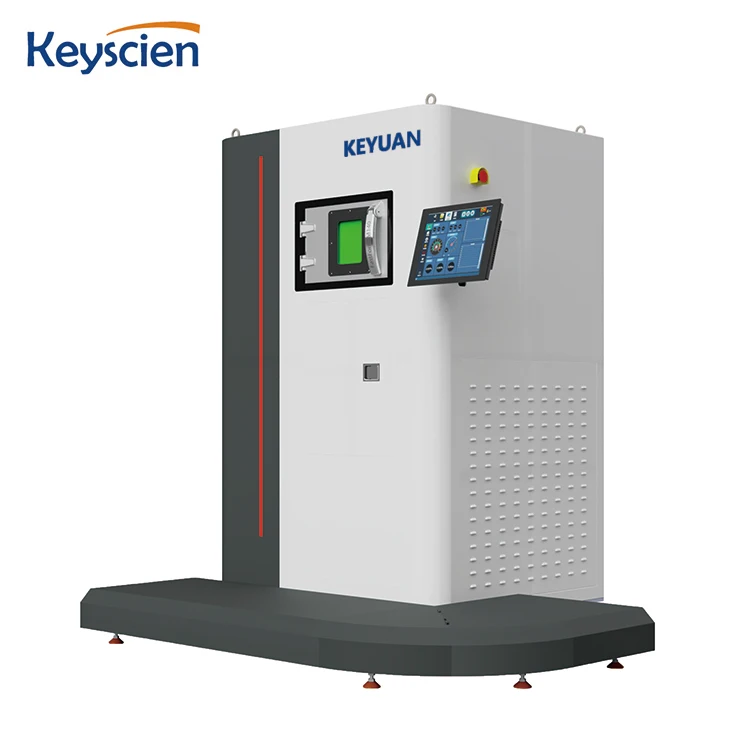 However, for a long time it was not available to the market until DTM was created in 1996. In 2001, 3D Systems bought this company, and in 2014 the patent expired, and now this technology is available to a wide range of consumers. nine1653 The SLS 3D printing technique consists in the fact that the material is heated by a laser beam until the particles are sintered, that is, not completely. As a result, the model turns out not to be solid, but as if “sintered” from individual tiny particles. If we consider the structure under magnification, then individual particles of the material will be visible, as if glued to each other.
However, for a long time it was not available to the market until DTM was created in 1996. In 2001, 3D Systems bought this company, and in 2014 the patent expired, and now this technology is available to a wide range of consumers. nine1653 The SLS 3D printing technique consists in the fact that the material is heated by a laser beam until the particles are sintered, that is, not completely. As a result, the model turns out not to be solid, but as if “sintered” from individual tiny particles. If we consider the structure under magnification, then individual particles of the material will be visible, as if glued to each other.
The operation of a 3D printer that prints using SLS technology is as follows. Powder material is poured into the chamber. A 3D model in STL format is loaded into the software. The working platform is exposed and a thin layer of material (thickness about 120 microns) is applied to it, leveled with a roller. The laser sinters the powder particles according to the loaded model.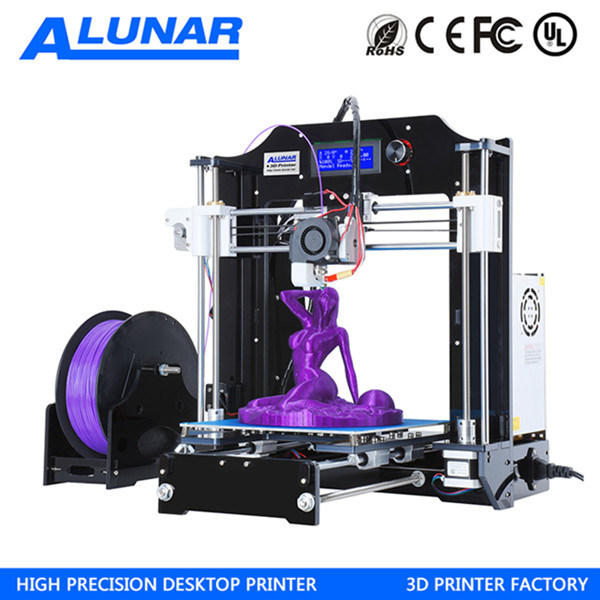 After the layer is completed, the platform is lowered and a new layer of material is applied. The procedure will be repeated until the very last layer is completed. nine1653 Since there is unused material in the working chamber, the need for supports simply disappears, because complex and overhanging parts will be supported by unused material. This allows you to get models of any, even very complex geometry.
After the layer is completed, the platform is lowered and a new layer of material is applied. The procedure will be repeated until the very last layer is completed. nine1653 Since there is unused material in the working chamber, the need for supports simply disappears, because complex and overhanging parts will be supported by unused material. This allows you to get models of any, even very complex geometry.
Powder polymers, metals and their alloys, ceramics, glass, composite materials can be used as consumables. But in any case, the material must be in powder form. Due to the fact that the power of laser radiation can be adjusted, the degree of melting of the material can change, and, accordingly, the strength and uniformity of the structure of the resulting model. Currently, the most popular material for 3D printing using SLS technology is polyamide. This is a versatile powder material that can be used in almost any field. If powdered metal is used for printing, it is preheated to make printing faster and easier.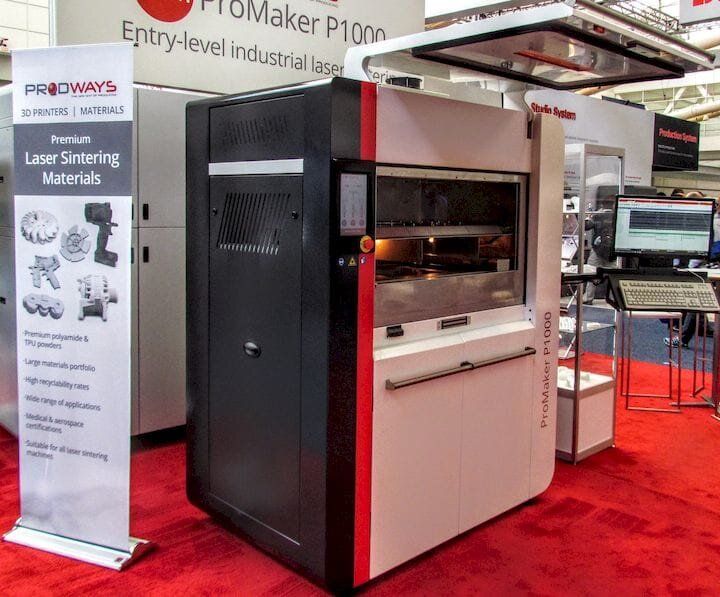 nine1653 As a result of 3D printing, models are obtained with a surface that requires processing, in particular grinding. Models made of polyamide are sensitive to moisture, so they must be coated with a protective compound, such as moisture-resistant paint, if outdoor use is planned.
nine1653 As a result of 3D printing, models are obtained with a surface that requires processing, in particular grinding. Models made of polyamide are sensitive to moisture, so they must be coated with a protective compound, such as moisture-resistant paint, if outdoor use is planned.
Selective laser sintering shows excellent results in small batch production as well as for making master models. This 3D printing technology is in demand in the aerospace industry, in manufacturing, etc. nine1653 The disadvantages of SLS 3D printing technology are the high cost of equipment. In addition, the powder material is potentially harmful to the human body, so a separate room with air conditioning and an air filter is equipped for such 3D printers. All this imposes difficulties for additive manufacturing using this technique. But this does not mean that you cannot take advantage of the possibilities of selective laser sintering technology, because our company provides professional 3D printing services on such equipment. You can order 3D printing using SLS technology from us. All you need is to provide us with a file with a 3D model in STL format. We guarantee you high quality printing in full accordance with the provided 3D model. nine1653
You can order 3D printing using SLS technology from us. All you need is to provide us with a file with a 3D model in STL format. We guarantee you high quality printing in full accordance with the provided 3D model. nine1653
SELECTIVE LASER MELTING PRINT TECHNOLOGY – + SLM
Selective (selective) laser melting - SLM is a 3D printing method from a mathematical CAD model, which is used to create 3D objects by melting metal powders. For this, high-power lasers are used.
Using this technology, it is possible to create precise metal parts that will later be used in various units and assemblies, including non-separable structures that change their geometry during use. This type of printing is becoming more and more widespread, because the parts created by this method are in many ways superior in their mechanical and physical characteristics to products produced by traditional methods. nine1653 The advantages of 3D printing using SLM technology are: the ability to solve the most complex production tasks, including in the aerospace industry, where parts and assemblies have a hard load and serious requirements are imposed.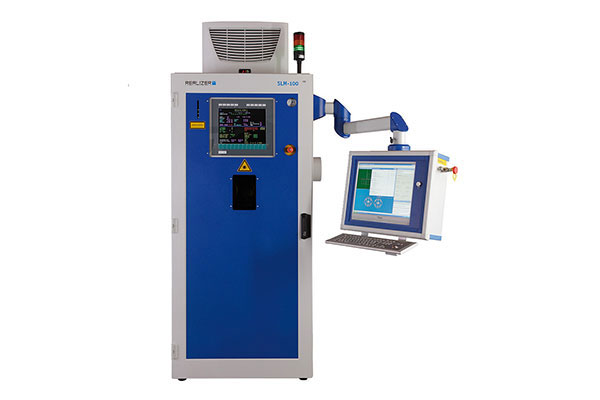 Also, SLM printing is used in experimental and scientific and technical activities, where it is possible to significantly reduce the R&D cycle, because the most complex mechanisms and products can be created without serious equipment.
Also, SLM printing is used in experimental and scientific and technical activities, where it is possible to significantly reduce the R&D cycle, because the most complex mechanisms and products can be created without serious equipment.
The technology also allows the printing of objects with internal cavities, which can significantly reduce the weight of products. nine1653 The essence of the method lies in the layer-by-layer application of metal powder on a special heated platform and its subsequent processing with a high-power laser, in accordance with the CAD model. The working chamber of the 3D printer, where the melting process itself takes place, is filled with argon or nitrogen. The choice of gas will depend on which consumable is selected for printing. Inert gas will be mainly consumed in preparation for printing, when the chamber is purged, because it is necessary to achieve conditions so that the percentage of oxygen in the chamber is no more than 0.15%. This is a necessary condition in order to avoid the oxidation of metals. Consumables can be: powdered metals and alloys. It can be tool or stainless steel, titanium and its alloys, aluminum, platinum, gold, as well as cobalt-chromium alloys. nine1653 The model is fused layer by layer. After the printing of the prototype is completed, it is removed from the chamber with the working platform and separated from it mechanically. In the future, it may require processing, because the surface of the product may not be ideal. However, the product will be very strong and uniform in structure, similar to cast.
Consumables can be: powdered metals and alloys. It can be tool or stainless steel, titanium and its alloys, aluminum, platinum, gold, as well as cobalt-chromium alloys. nine1653 The model is fused layer by layer. After the printing of the prototype is completed, it is removed from the chamber with the working platform and separated from it mechanically. In the future, it may require processing, because the surface of the product may not be ideal. However, the product will be very strong and uniform in structure, similar to cast.
One of the advantages of the technology is its economy and non-waste. After all, unsintered material can be reused. The thickness of one layer is 20-100 microns. Thus, SLM 3D printing is a very precise and highly detailed additive manufacturing technique. nine1653 The cost of 3D printers using this method is very high. And in general, their operation is by no means a simple matter, requiring special conditions. But you have a great opportunity to use 3D printing using selective laser fusion technology with the help of our company. All you need is just to order 3D printing using this technique in our company. To do this, you need to provide us with an STL file with a CAD model for printing.
All you need is just to order 3D printing using this technique in our company. To do this, you need to provide us with an STL file with a CAD model for printing.
Take advantage of the innovative method of creating high-precision metal products - SLM printing. nine1653
ELECTRON BEAM MELTING PRINT TECHNOLOGY – + EBM
One of the most reliable metal 3D printing methods is EBM printing or electron beam melting. This is an additive manufacturing technology that is used to create high-strength, comparable to cast, metal products. Pure (without impurities) metal powder acts as a consumable. Printing is carried out in a vacuum chamber, which minimizes the oxidation of the material, such as pure titanium. nine1653 Electron beam melting is very similar to SLS 3D printing technology, that is, selective laser melting. However, it does not use powerful lasers, but electron emitters, which serve as sources of powerful energy used to melt metal.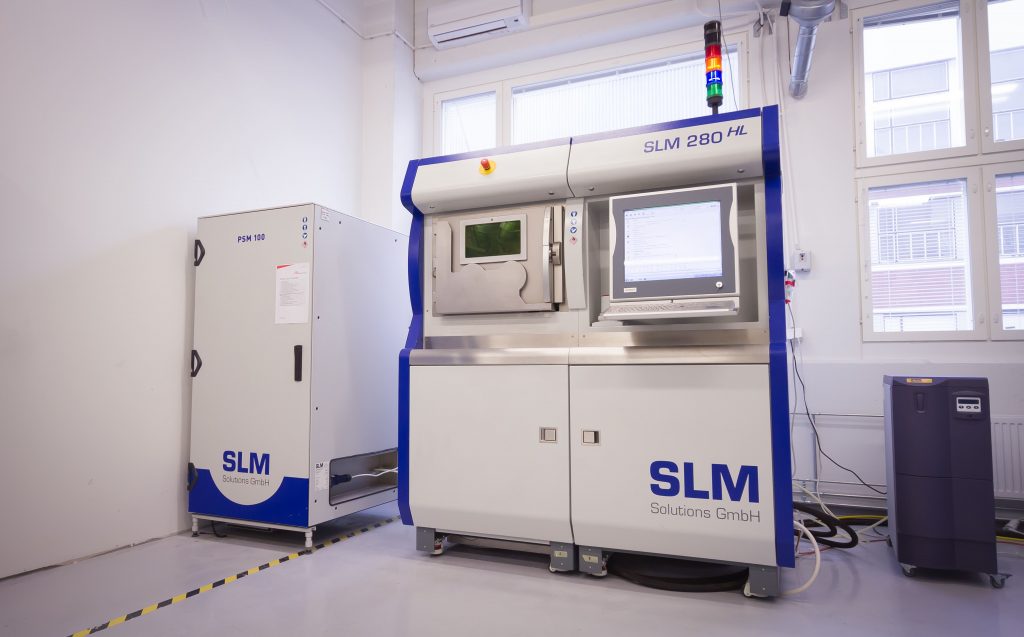 So-called electron guns fire high power electron beams that fuse metal powder. The method is similar to other 3D printing methods - the layering of consumables. A layer of metal powder is applied, and electron beams, following the contour of the model, fuse the material. Then the algorithm is repeated again until all layers are created and a finished three-dimensional object is obtained in accordance with the mathematical 3D model. nine1653 As a result of such 3D printing, a high-density metal model is obtained, and the porosity of the structure is absent. This means that additional processing by the method of firing for a strong fusion of the material in the model is not required. And the model itself will have high strength characteristics initially, that is, it will not differ in any way from cast products.
So-called electron guns fire high power electron beams that fuse metal powder. The method is similar to other 3D printing methods - the layering of consumables. A layer of metal powder is applied, and electron beams, following the contour of the model, fuse the material. Then the algorithm is repeated again until all layers are created and a finished three-dimensional object is obtained in accordance with the mathematical 3D model. nine1653 As a result of such 3D printing, a high-density metal model is obtained, and the porosity of the structure is absent. This means that additional processing by the method of firing for a strong fusion of the material in the model is not required. And the model itself will have high strength characteristics initially, that is, it will not differ in any way from cast products.
Electron beam melting is printed at high background temperatures of 700-1000 degrees Celsius. This avoids a strong temperature difference between the already cooled printed layer and the fresh hot layer.